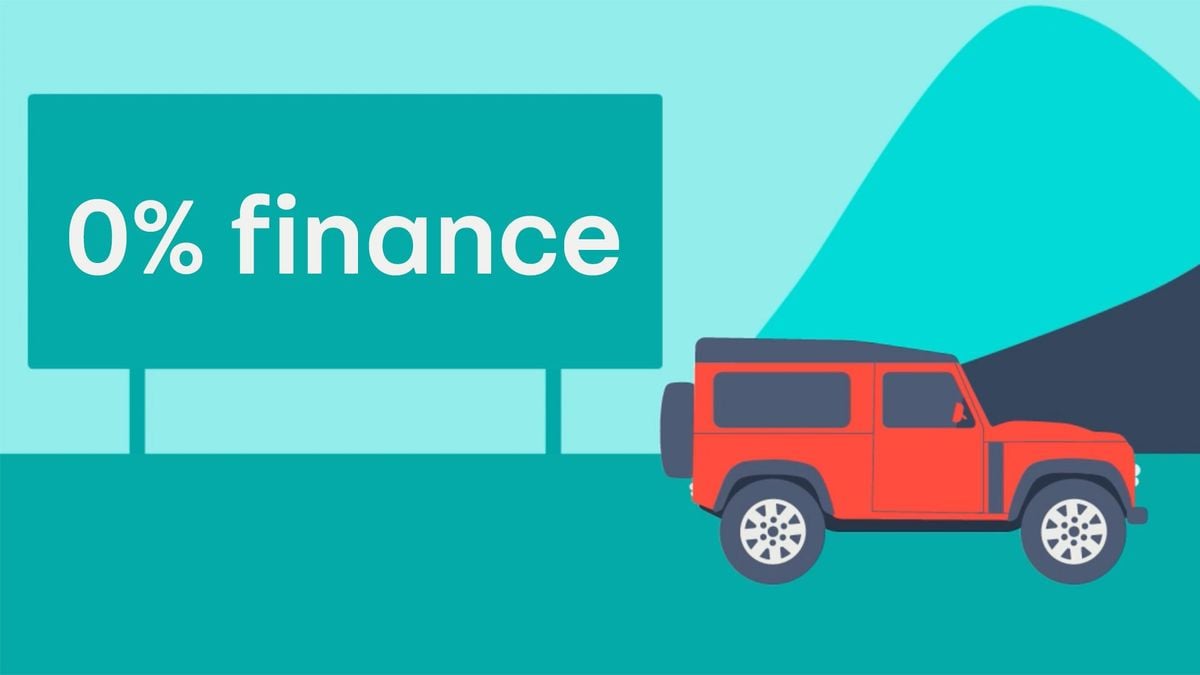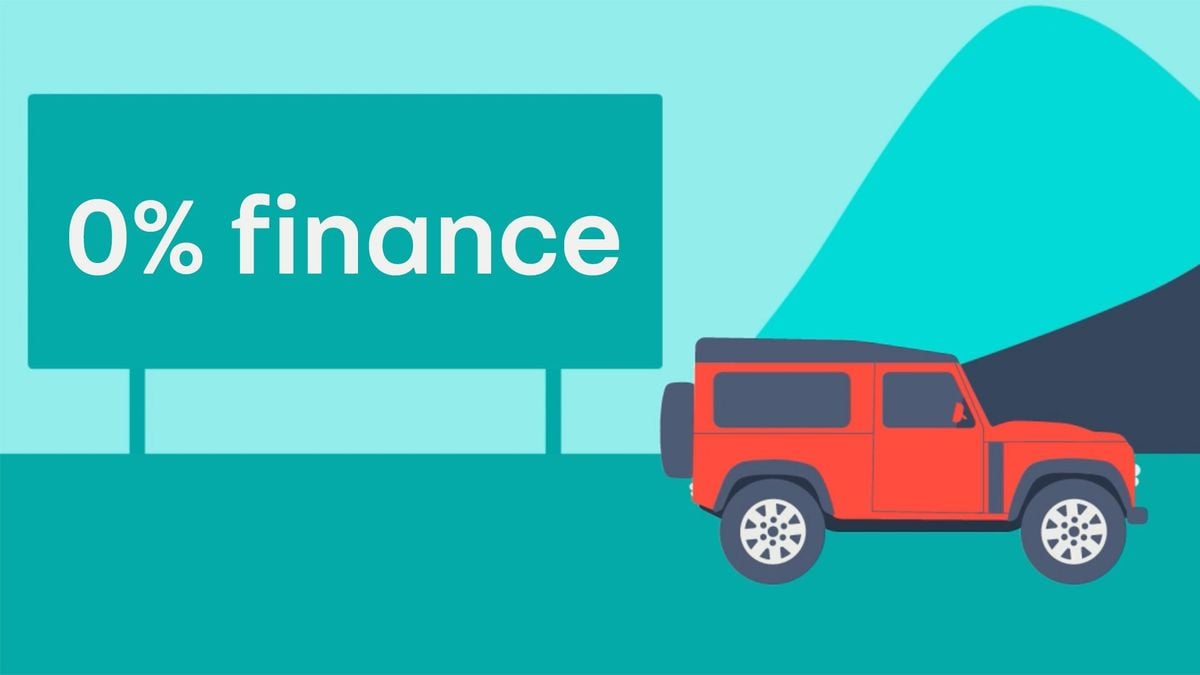

Finance
How Does Affirm Make Money With 0 APR?
Published: March 3, 2024
Learn how Affirm generates revenue while offering 0% APR financing options. Discover the financial strategies behind Affirm's business model.
(Many of the links in this article redirect to a specific reviewed product. Your purchase of these products through affiliate links helps to generate commission for LiveWell, at no extra cost. Learn more)
Table of Contents
- Affirm: Revolutionizing Consumer Finance with 0% APR
- Empowering Financial Well-being through Transparent Lending
- The Economics Behind Affirm’s 0% APR Financing Model
- Diversified Sources of Income Driving Affirm’s Financial Viability
- Empowering Financial Inclusion and Transparency through Innovative Revenue Strategies
Introduction
Affirm: Revolutionizing Consumer Finance with 0% APR
In today's ever-evolving financial landscape, innovative fintech companies are reshaping the way consumers approach borrowing and spending. Among these trailblazers is Affirm, a financial technology company that has garnered attention for its unique approach to providing point-of-sale loans with 0% APR. The concept of 0% APR financing has long been a source of fascination and curiosity for consumers, leaving many to wonder how such a model can be sustainable for a company like Affirm. This article delves into the mechanics behind Affirm's business model, exploring how the company is able to generate revenue while offering 0% APR financing to its customers.
Affirm's disruptive presence in the consumer finance sector has sparked conversations about the intersection of technology, finance, and consumer behavior. By offering transparent, flexible, and customer-centric financial products, Affirm has carved out a niche in the market and captured the interest of both consumers and industry experts. Understanding the inner workings of Affirm's revenue model is not only intriguing from a financial standpoint but also sheds light on the broader implications of leveraging technology to reimagine traditional financial services.
As we unravel the mechanisms driving Affirm's success, we gain valuable insights into the evolving dynamics of consumer finance and the pivotal role played by innovative fintech solutions. This exploration into Affirm's approach to 0% APR financing not only demystifies the company's revenue generation strategies but also highlights the transformative potential of fintech in reshaping the financial experiences of individuals and businesses alike.
What is Affirm?
Empowering Financial Well-being through Transparent Lending
Affirm is a prominent financial technology company that has redefined the lending landscape by offering transparent, accessible, and customer-centric financial products. Founded by Max Levchin in 2012, Affirm has emerged as a disruptive force in the consumer finance sector, leveraging technology to provide point-of-sale loans with a focus on simplicity and clarity. The company’s mission revolves around empowering consumers to make informed financial decisions while avoiding hidden fees and compounding interest rates commonly associated with traditional credit products.
At its core, Affirm operates as a digital lender that partners with a diverse array of merchants, enabling them to offer customers the option to pay for purchases in fixed installments with 0% APR financing in some cases. This approach not only enhances the purchasing power of consumers but also eliminates the uncertainty and stress often linked to traditional credit arrangements. By integrating seamlessly into the checkout process of partner merchants, Affirm facilitates a frictionless experience for consumers, allowing them to split their payments over time without incurring exorbitant interest charges.
Affirm’s commitment to transparency and responsible lending is evident in its straightforward terms and the absence of hidden fees. The company’s user-friendly interface and clear communication of repayment schedules contribute to a more positive and predictable borrowing experience for consumers. Furthermore, Affirm’s emphasis on financial education and empowerment underscores its dedication to fostering the financial well-being of its users, positioning the company as a trusted ally in navigating the complexities of personal finance.
By bridging the gap between consumers and merchants through its innovative lending solutions, Affirm has cultivated a reputation for promoting financial literacy and enabling individuals to make purchases without falling into the pitfalls of high-interest debt. As we delve deeper into Affirm’s unique approach to lending, we gain a deeper understanding of how the company has positioned itself as a catalyst for reshaping the dynamics of consumer finance, driving positive change in an industry traditionally characterized by opacity and complexity.
How Does Affirm Make Money with 0% APR?
The Economics Behind Affirm’s 0% APR Financing Model
One of the most intriguing aspects of Affirm’s business model is its ability to offer 0% APR financing while still generating revenue. At first glance, the concept of providing interest-free loans may seem counterintuitive from a profitability standpoint. However, a closer examination reveals the underlying mechanisms that enable Affirm to thrive while extending this enticing financial offering to its customers.
Affirm’s revenue generation from 0% APR financing stems from its partnerships with merchants and the interchange fees associated with each transaction. When a consumer chooses to pay for a purchase using Affirm’s installment plans, the merchant pays a certain percentage of the transaction amount to Affirm as a fee. This fee, known as an interchange fee, serves as a key source of revenue for Affirm. While the consumer enjoys the benefit of 0% APR, the merchant compensates for this through the interchange fee, thereby enabling Affirm to monetize the transaction without imposing interest charges on the consumer.
Furthermore, Affirm employs sophisticated risk assessment and underwriting processes to evaluate the creditworthiness of its customers. By leveraging data analytics and proprietary algorithms, Affirm can assess the risk associated with each loan and determine suitable interest rates for different customers. While some consumers may qualify for 0% APR financing, others may be offered installment plans with low, yet non-zero, APRs based on their credit profiles. This tiered approach to interest rates allows Affirm to cater to a broad spectrum of consumers while tailoring the cost of credit to individual risk levels.
Moreover, Affirm’s commitment to responsible lending extends beyond the absence of compounding interest. The company may charge late fees in the event of missed payments, contributing to its revenue stream. These fees serve as a safeguard against delinquencies and incentivize timely repayments, aligning with Affirm’s objective of promoting financial discipline among its users.
By unraveling the intricacies of Affirm’s revenue model, we gain a comprehensive understanding of how the company effectively monetizes 0% APR financing through strategic partnerships, interchange fees, risk assessment, and ancillary charges. This multifaceted approach not only sustains Affirm’s financial viability but also enables the company to uphold its commitment to transparent and customer-centric lending, fostering a win-win scenario for both consumers and the company.
Affirm’s Revenue Streams
Diversified Sources of Income Driving Affirm’s Financial Viability
Affirm’s revenue streams encompass a multifaceted framework that enables the company to monetize its innovative financial offerings while fostering sustainable growth. By exploring the diverse sources of income that underpin Affirm’s financial model, we gain valuable insights into the company’s revenue diversification and its ability to thrive in the competitive landscape of consumer finance.
Interchange Fees: A primary driver of Affirm’s revenue is the collection of interchange fees from partner merchants. When consumers opt to utilize Affirm’s installment plans for their purchases, the associated interchange fees paid by merchants contribute significantly to the company’s income. This symbiotic relationship between Affirm and its merchant partners not only facilitates seamless transactions for consumers but also forms a cornerstone of the company’s revenue generation strategy.
Interest Income: While Affirm is renowned for its 0% APR financing options, the company also offers installment plans with non-zero APRs, tailored to the credit profiles of individual consumers. Through these offerings, Affirm accrues interest income, albeit at lower rates than traditional credit products. This diversified approach to interest income allows Affirm to cater to a broad spectrum of consumers while capturing revenue from interest-bearing loans.
Late Fees: In line with its commitment to responsible lending, Affirm may impose late fees on customers who miss payment deadlines. These fees serve as a safeguard against delinquencies and contribute to the company’s revenue streams. By incentivizing timely repayments, late fees align with Affirm’s objective of promoting financial discipline among its users while bolstering its financial performance.
Partnership Programs: Affirm collaborates with a wide array of merchants, offering them access to the company’s innovative financing solutions. Through partnership programs and tailored financial products, Affirm strengthens its relationships with merchants and may derive additional revenue from customized arrangements and service fees, further diversifying its income streams.
By embracing a holistic approach to revenue generation, Affirm demonstrates its agility in leveraging multiple income sources while upholding its commitment to transparency and customer-centric financial services. The company’s ability to capitalize on interchange fees, interest income, late fees, and partnership programs underscores its resilience and adaptability in navigating the complexities of consumer finance, positioning Affirm as a formidable player in the evolving landscape of fintech-driven lending.
Conclusion
Empowering Financial Inclusion and Transparency through Innovative Revenue Strategies
Affirm’s pioneering approach to 0% APR financing has not only reshaped the consumer finance landscape but also exemplified the intersection of innovation, transparency, and financial empowerment. As we conclude our exploration into Affirm’s revenue model and its ability to generate income while offering interest-free loans, we recognize the profound impact of the company’s strategies on the broader narrative of financial inclusion and responsible lending.
By prioritizing transparent and customer-centric financial solutions, Affirm has transcended the traditional constraints of lending, fostering an environment where individuals can make informed purchasing decisions without succumbing to the burdens of compounding interest. The company’s commitment to financial literacy and empowerment has resonated with consumers, positioning Affirm as a trusted ally in navigating the complexities of personal finance.
Through a diversified approach to revenue generation, encompassing interchange fees, interest income, late fees, and strategic partnerships, Affirm has demonstrated its resilience and adaptability in driving sustainable growth while maintaining its core values. The company’s ability to monetize 0% APR financing without compromising its commitment to responsible lending underscores its prowess in balancing financial viability with customer-centric ethics.
As Affirm continues to innovate and expand its footprint in the consumer finance domain, its revenue model serves as a testament to the transformative potential of fintech in democratizing access to transparent and flexible financial products. By leveraging technology and strategic partnerships, Affirm has not only redefined the economics of interest-free lending but has also catalyzed a paradigm shift in the way individuals interact with credit and borrowing.
In essence, Affirm’s success in generating revenue while offering 0% APR financing reflects a harmonious fusion of financial acumen, technological innovation, and a steadfast commitment to empowering individuals through transparent and accessible lending. As the company navigates the evolving landscape of consumer finance, its revenue model stands as a testament to the enduring impact of disruptive fintech solutions in reshaping the financial experiences of consumers, driving positive change, and fostering a more inclusive and informed approach to personal finance.














